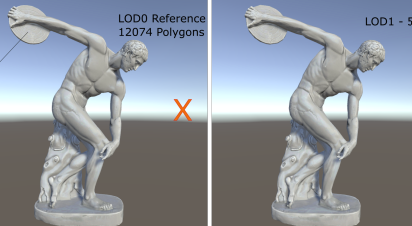Velocity-Based LOD Reduction in Virtual Reality: A Psychometric Approach
PubDate: Jan 2023
Teams: University of Manchester
Writers: David Petrescu, Paul A. Warren, Zahra Montazeri, Stephen Pettifer
PDF: Velocity-Based LOD Reduction in Virtual Reality: A Psychometric Approach

Abstract
Virtual Reality headsets enable users to explore the environment by performing self-induced movements. The retinal velocity produced by such motion reduces the visual system’s ability to resolve fine detail. We measured the impact of self-induced head rotations on the ability to detect quality changes of a realistic 3D model in an immersive virtual reality environment. We varied the Level-of-Detail (LOD) as a function of rotational head velocity with different degrees of severity. Using a psychophysical method, we asked 17 participants to identify which of the two presented intervals contained the higher quality model under two different maximum velocity conditions. After fitting psychometric functions to data relating the percentage of correct responses to the aggressiveness of LOD manipulations, we identified the threshold severity for which participants could reliably (75\%) detect the lower LOD model. Participants accepted an approximately four-fold LOD reduction even in the low maximum velocity condition without a significant impact on perceived quality, which suggests that there is considerable potential for optimisation when users are moving (increased range of perceptual uncertainty). Moreover, LOD could be degraded significantly more in the maximum head velocity condition, suggesting these effects are indeed speed dependent.


